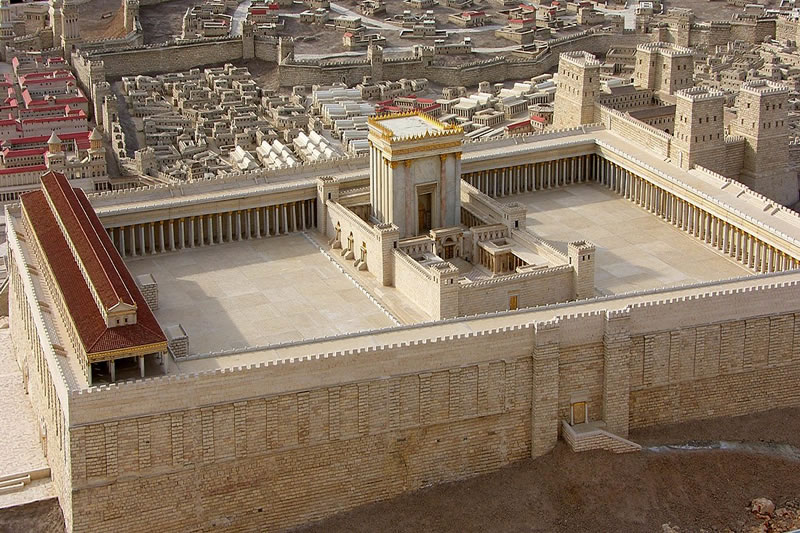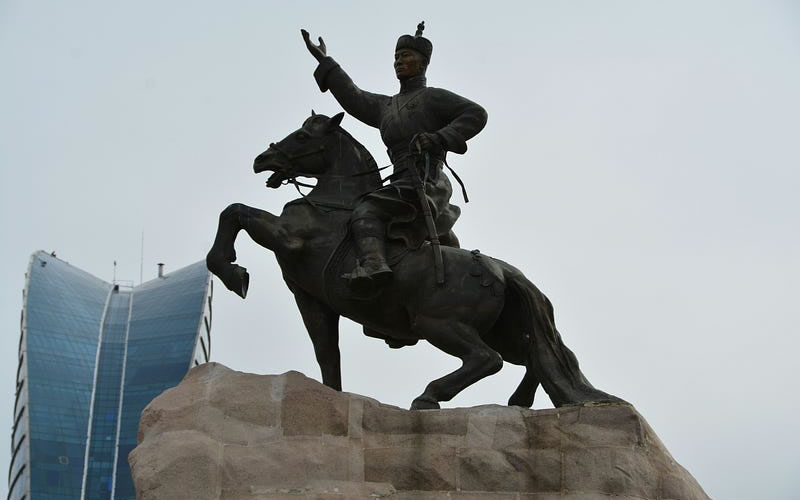The destruction of Jerusalem and the Temple in 70 AD was one of the most devastating events in Jewish history. However, it did not come without warning. Jesus repeatedly prophesied this destruction, urging the people of Israel to repent and recognize God’s time of visitation in his first coming. Unfortunately, His warnings went unheeded, leading to a tragic fulfillment of His words.
Through a series of prophecies, lamentations, and urgent calls to repentance, Jesus made it clear that Jerusalem’s downfall was the result of spiritual blindness, rejection of the truth, and failure to recognize Him as their Messiah.
Here is a chronicle of His warnings in the order they were given from the start of His ministry to the final moments before His crucifixion:
“Unless You Repent, You too Will all Perish” (Luke 13:1-5)
At one point in His ministry, Jesus was confronted with news about two tragic events:
- Pilate’s massacre of Galilean worshippers in the Temple.
- The collapse of the Tower of Siloam, which killed 18 people.
The people assumed these victims must have been worse sinners than others. However, Jesus responded with a strong warning:
“Do you think that these Galileans were worse sinners than all the other Galileans because they suffered this way? I tell you, no! But unless you repent, you too will all perish.” (Luke 13:2-3)
“Or those eighteen who died when the tower in Siloam fell on them—do you think they were more guilty than all the others living in Jerusalem? I tell you, no! But unless you repent, you too will all perish.” (Luke 13:4-5)
This was not just a general call to repentance—Jesus was directly warning the nation of Israel. He made it clear that if the people continued on their rebellious path and failed to repent and heed his message, a similar disaster, though of even greater scale, would come upon them, except those that heeded Jesus’ warning.
Jesus’ warning eventually came true in 70 AD. The same Roman forces that executed those Galilean worshippers were responsible for the destruction of Jerusalem. The city was ravaged, the temple destroyed, and many people died at the hands of the Romans, just as the Galileans did. Just as the people in the tower couldn’t escape their sudden demise, the people of Jerusalem couldn’t escape the destruction that fell upon them.
Jesus Weeps Over Jerusalem (Luke 19:41-44)
As Jesus rode into Jerusalem on Palm Sunday, many expected Him to bring political salvation. Instead, He did something unexpected—He wept over the city.
“If you, even you, had only known on this day what would bring you peace—but now it is hidden from your eyes.” (Luke 19:42)
Then He gave a heartbreaking prophecy:
“The days will come upon you when your enemies will build an embankment against you and encircle you and hem you in on every side. They will dash you to the ground—you and the children within your walls. They will not leave one stone on another, because you did not recognize the time of God’s coming to you.” (Luke 19:43-44)
This was a direct prophecy of the Roman siege in 70 AD. The Romans surrounded Jerusalem, cut off its food supply, and eventually destroyed the city, killing over a million people.
Jesus Condemns Jerusalem’s Leadership (Matthew 23:35-39)
In Matthew 23, Jesus delivered a harsh rebuke to the religious leaders, condemning their hypocrisy and hard-heartedness. He connected their actions with the history of Israel rejecting God’s messengers. Then, in a deeply sorrowful lament, He spoke these famous words:
“Jerusalem, Jerusalem, you who kill the prophets and stone those sent to you, how often I have longed to gather your children together, as a hen gathers her chicks under her wings, and you were not willing.” (Matthew 23:37)
“Look, your house is left to you desolate. For I tell you, you will not see me again until you say, ‘Blessed is he who comes in the name of the Lord.’” (Matthew 23:38-39)
Here, Jesus predicted that the Temple (“your house”) would be left desolate, meaning it would be abandoned and destroyed. This was fulfilled in 70 AD when the Romans burned the Temple to the ground.
The Temple’s Destruction Foretold (Matthew 24:1-2)
As Jesus left the Temple, His disciples admired the magnificent structure. But Jesus gave a shocking prophecy:
“Do you see all these things?” he asked. “Truly I tell you, not one stone here will be left on another; everyone will be thrown down.” (Matthew 24:2)
This was fulfilled exactly in 70 AD, when Roman soldiers tore the Temple apart stone by stone, searching for melted gold.
The Coming Siege of Jerusalem (Luke 21:20-24)
In Luke 21, Jesus provided a detailed prophecy about how Jerusalem would fall:
“When you see Jerusalem being surrounded by armies, you will know that its desolation is near.” (Luke 21:20)
“How dreadful it will be in those days for pregnant women and nursing mothers! There will be great distress in the land and wrath against this people.” (Luke 21:23)
Jesus warned His followers to flee the city when they saw these signs. Those who obeyed survived, while those who ignored the warnings perished.
Jesus’ Final Warning on the Way to the Cross (Luke 23:28-31)
Even as Jesus was being led to His crucifixion, He turned to the mourning women and said:
“Daughters of Jerusalem, do not weep for me; weep for yourselves and for your children. For the time will come when you will say, ‘Blessed are the childless women, the wombs that never bore and the breasts that never nursed!’ Then “‘they will say to the mountains, “Fall on us!” and to the hills, “Cover us!” “For if people do these things when the tree is green, what will happen when it is dry?” (Luke 23:28-31).
Jesus is simply saying that if people are reacting with such sorrow and grief over His suffering in the hands of Romans during a time of relative peace and stability (the “green tree”), what will happen when the true crisis with the Romans comes (the “dry tree”)? The coming destruction of Jerusalem would, according to Jesus, bring far worse suffering than what He is currently enduring. It would bring devastation, suffering, and death, and the people would wish for relief so badly that they would even prefer death over living through such terrible times.
According to ancient sources, such as the Jewish historian Flavius Josephus, who was an eyewitness to the siege, the suffering was so severe that people regretted having children, and the intense starvation drove some parents to the unimaginable desperation of eating their own children just to survive.
The Urgency of Jesus’ Warning
The destruction of Jerusalem and the Temple in 70 AD was not just a historical tragedy—it was a fulfillment of Jesus’ warning and predictions. The key takeaway for all of us is to take Jesus’ message, call to repentance, and warning seriously. His warnings still remain relevant today:
- Rejecting God’s truth leads to destruction.
- Spiritual pride blinds people to God’s message.
- God gives warnings before judgment comes.
- The wise recognize signs and take action.
- True security is found in faithfulness to God, not religious institutions.
Just as Jesus warned Jerusalem before its fall, He warns the world today: Repent and follow Him before it is too late.




